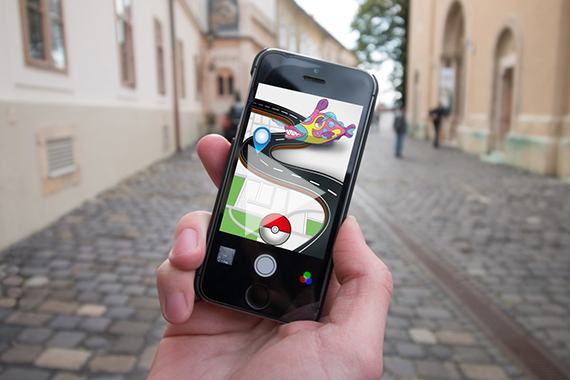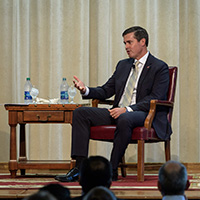 A Krannert PhD student and faculty member first examined the benefits of Pokémon Go on local restaurants, while another team of researchers followed up with a working paper on the economic and human costs of using it the game while driving. (Stock Image)
A Krannert PhD student and faculty member first examined the benefits of Pokémon Go on local restaurants, while another team of researchers followed up with a working paper on the economic and human costs of using it the game while driving. (Stock Image)
The Pokémon Paradox
Krannert researchers examine the costs and benefits of popular game
When the augmented reality (AR) game Pokémon Go made its debut in 2016, it quickly became the most popular mobile game in U.S. history with more than 20 million active users daily. It’s now at the top of the menu in an industry that generates more than $1 billion in annual revenues.
According to a pair of working papers from Purdue University’s Krannert School of Management, tech companies aren’t the only businesses getting a taste of the profits. But how does that balance with the economic costs of playing the game while driving, which include an increased number of vehicular accidents, injuries and even death?
We’ll begin with the benefits.
The first study, titled “The Impact of an Augmented Reality Game on Local Businesses: A Study of Pokémon Go on Restaurants,” originated with Krannert PhD student Vandith Pamuru, who was recognized for his work at the school’s 2017 PhD Research Symposium. It was coauthored by Karthik Kannan, Purdue’s Thomas Howatt Chaired Professor in Management; and Warut Khern-am-nuai, who earned both his master’s and doctoral degrees at Purdue’s Krannert School and is now an assistant professor at McGill University’s Desautels Faculty of Management.
“As an AR-based game, Pokémon Go incentivizes users to move around in the physical world and visit PokéStops as they play,” Pamuru says. “We wanted to explore if virtual world incentives are strong enough to create business implications in the real-world.”
The researchers considered restaurants as the representative set of businesses and used online reviews as the proxy measure for footfall and quality perception.
“Using data collected from a leading online review site for food businesses, we employ difference-in-difference methodology to answer the question,” Pamuru says. “The setting was a straightforward choice because not all businesses have PokéStops near them.”
Pamuru and his colleagues found that restaurants near PokéStops — real-world locations where players can collect Poké Balls and related game items — observed higher online activity compared to restaurants that do not have PokéStops nearby. However, there was no significant difference in terms of the perception of customers between restaurants with PokéStops nearby and those without.
Pamuru says the research will contribute to the field of economics of information systems by establishing the theoretical connections between the AR technology and consumer economics behavior.
Now for the costs.
A few months after Pamuru ’s research began circulating, Krannert finance professors Mara Faccio, the Hanna Chair in Entrepreneurship, and John McConnell, the Burton D. Morgan Distinguished Chair of Private Enterprise, released a provocative working paper titled “Death by Pokémon Go: The Economic and Human Costs of Using Apps While Driving.”
Like the study coauthored by Pamuru, the game was of interest to the researchers because of its PokéStops feature, which allow players to replenish their store of weapons at real-world locations.
Although capturing Pokémon, watching new characters hatch and competing in battle raids may seem like a harmless and inexpensive pastime, Faccio and McConnell’s study suggests otherwise.






